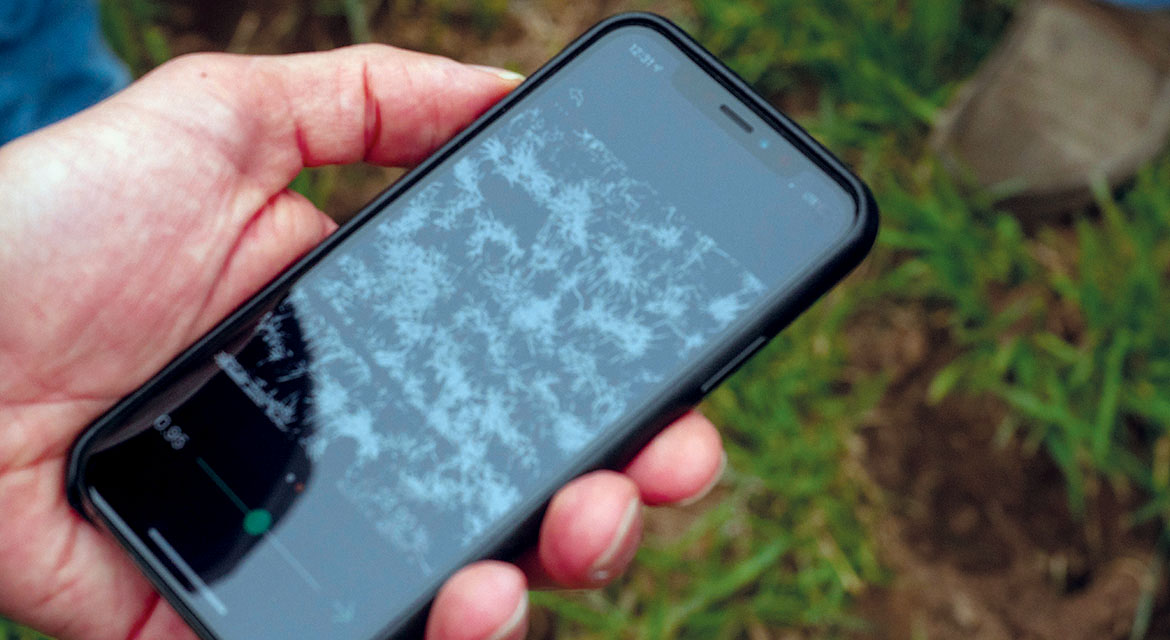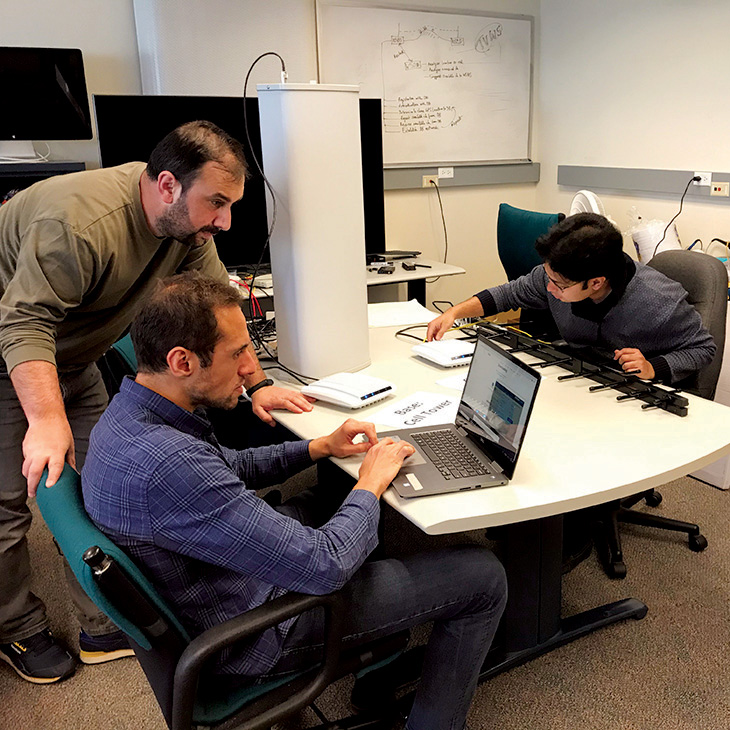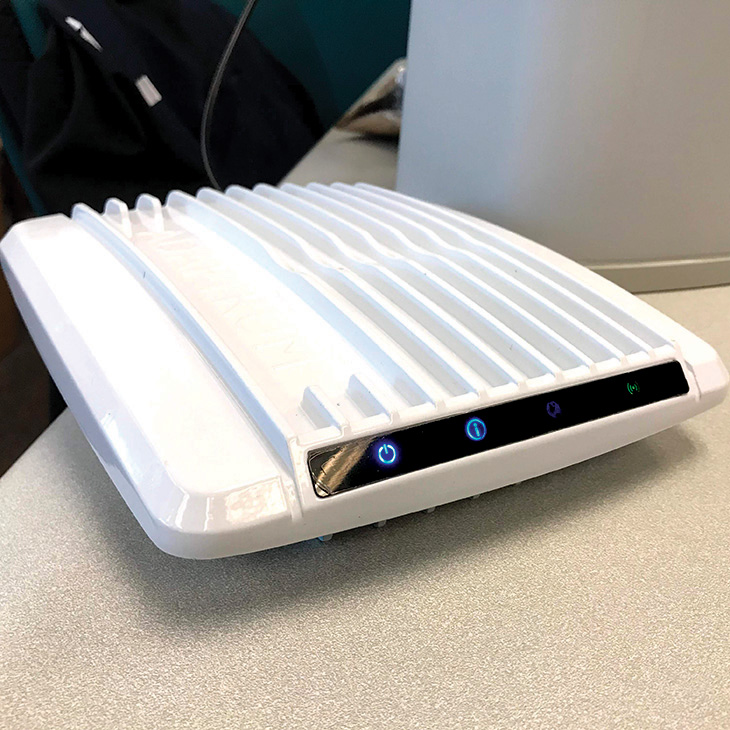
OSU researchers working to connect rural Oklahoma with better broadband access
Thursday, May 14, 2020
The digital divide remains very real for many Oklahomans. Even today, fewer than half of rural residents here have broadband access.
As nearly every conceivable facet of life moves online and into the cloud, rural communities are falling further and further behind — the divide between the digital haves and have-nots grows more stark.
With just 79 percent of all Oklahoma residents — city dwellers included — having broadband access, Oklahoma is well behind the national average of 94 percent. But researchers at Oklahoma State University aim to change that. They’re looking at innovative ways to fill that gap, bringing rural Oklahomans access that’s arguably as important in the 21st century as electricity was in the 20th century.
Agricultural economics professor Brian Whitacre wrote his dissertation on the urban/rural divide in 2005 and has been studying rural broadband ever since. About 800,000 Oklahomans don’t have a broadband connection in their homes, he’s found.
“As you might expect, most of those are in rural Oklahoma. All my papers start off the same way: People who don’t have access to this technology are going to fall further and further behind. They won’t have opportunities to make income, to apply for jobs, to check on their health care or to participate in civic discourse. Really, it affects all aspects of life. Think about everything you do on the internet every day: getting your news, making a bank withdrawal. If you can’t do that on a daily basis, and you have to go physically do that, you’re spending a lot of time on other things that you could be using more productively.”
Still, Whitacre said he is optimistic. In the past few years, he said there has been a shift toward innovation, and OSU’s new Rural Renewal Initiative is helping lead the way.
“I’m optimistic that the conversation has changed from not just providing infrastructure but to what we’re calling digital inclusion, which is addressing the cost and digital skills pieces of the puzzle,” he said.

To address the challenge, OSU has launched several pilot projects. The first is focused on bringing broadband to rural libraries. Over the past three years, Whitacre and his team have partnered with 15 libraries in communities of 2,000-3,000 people to provide Wi-Fi hotspots.
“People can go to the library and check them out, bring them home with them and basically have a broadband connection for a week,” he said. “They can connect it to their phones, to their tablets, their laptops. It’s been an amazing program in terms of what we’ve been able to accomplish. Each library does a couple hundred loans a year. The patron response has been overwhelming. They’re using it for their kids’ homework, job searches, to earn extra income and even start small businesses in some places.”
OSU’s Extension program funds the project for the first year (about half with grants from AARP), then the library takes over with local sponsors such as banks and nonprofits.
Perkins librarian Alison Bloyd said the program has been a wild success, despite some apprehension at first.
“It’s intimidating for a small library with very few resources,” she said. “Had Brian [Whitacre] not brought it to us, we would not have pursued it, at least not at that time. But it has been a big success. We continually have a waitlist of anywhere from 10 to 20 people. We’ve only had positive responses.”
Patrons without home internet access, those temporarily without internet and those who need to supplement their internet coverage all use the program.
“I think OSU taking the initiative in researching and planning is absolutely critical,” Bloyd said. “Reaching out to rural libraries is the best use of [these researchers’] resources. I don’t know how they could directly reach their intended audience otherwise. Rural libraries are the hub of a community, sometimes a county, and people seeking services generally come to libraries. So to be a point to not only distribute information but to provide services is critical for rural libraries.”
Sarkeys Distinguished Professor in Agricultural Science Tyson Ochsner said Extension has done a lot of work to incorporate libraries and community approaches to deliver technology. Now, with support from the Rural Renewal Initiative, OSU researchers are evaluating and refining the communications technologies themselves.
The latest step is a new technology called TV white space, which repurposes unused television frequencies to deliver broadband. Partnering with Pioneer Telephone Cooperative, a large phone co-op based out of Kingfisher, Oklahoma, the project’s initial focus will be on Tillman and Harmon counties. OSU researchers will install TV white space transmission equipment on area towers with the goal of delivering broadband speeds of 20-25 megabits per second.

“Folks in these places, their current options are getting them maybe 3 megabits per second, sometimes 2 or even dropping down to 1, depending on quality of service,” Ochsner said. “We’re hoping to make a dramatic improvement to their speed of internet access, and hopefully at a cost that will be feasible to the end user and the business. If this looks like something that’s going to work for these rural areas, then obviously that’s something Pioneer Telephone Cooperative or others could incorporate into their business plan. If we can get good, reliable high-speed service to farm and ranch headquarters then we want to set up another technology called LoRa.”
Ochsner describes LoRa, short for long- range, as similar to a Wi-Fi router. But instead of a few rooms in your house, it can cover several miles around a farm or ranch headquarters.
“So, then it opens up this opportunity for internet of things (IOT) application on farms and ranches,” he said. “Some of the things we envision under that agriculture ‘internet of things’ would be cropland monitoring stations. We’ll be working with some of the farmers to design and test monitoring stations that easily deploy to put into cropland and send them information about soil conditions, crop conditions and weather conditions for that field using that LoRa technology. Others might be keeping track of things. We envision having tags on livestock, or even equipment, where the farmer/ rancher can open their phone and see a map of where their assets are located, which would allow them to keep a better handle on their operation.”
Ochsner said the project is about more than bridging the rural/urban divide: It’s also a potential revolution for agriculture in Oklahoma.
“We’re hoping to create new streams of useful information for these farmers and ranchers,”
he said. “Farms and ranches
have gotten larger and larger, so there’s more money riding on the decisions that
these producers make. They need the best source of information they can get about
the conditions of their crops, livestock and other assets.”
Over the next year, OSU researchers will set up a prototype test of the TV white space system and develop crop monitoring stations and livestock monitoring applications.
“That could open the door to larger grants needed to scale this up to do the research and to involve more operations, more communities,” Ochsner said. “After that, the aim would be scaling it up and engaging more communities, more farms, more ranches.”
Dr. Sabit Ekin, an assistant professor of electrical and computer engineering, said the technology has been in existence for about a decade.
"I think OSU taking the initiative in researching and planning is absolutely critical."
Microsoft has set up systems in about a dozen states. Ekin and fellow project lead Dr. John O’Hara, an assistant professor of electrical and computer engineering, are hoping to spread awareness of the technology and its potential.
“People are using it, and it’s real; people just aren’t aware of it,” he said. “There is some improvement that needs to be done, but these devices are already out there on the market.”
Ekin believes OSU is the first to explore its use in Oklahoma. Working in partnership with two companies — Pilot Telecommunications and Canopy Technology — whose towers OSU will use to anchor the new equipment, Ekin believes OSU researchers can make a big difference in Oklahoma.
“This is something other communities in rural Oklahoma can look to in the future and say, ‘Hey, why can’t we set that up? It’s cost effective, OSU showed that it works.’ At that point, you’ll be stepping back and saying, ‘Wow, not only did this work, but it’s working for real people and pretty quickly,’” he said.
OSU could reap financial benefits from developing intellectual property, as well, but Ochsner said that’s not the driving force behind the project or the broader Rural Renewal Initiative. It’s about people.
“For those of us working on this Rural Renewal Initiative, that’s our motivation,” he said. “We’re thankful for all the research opportunities we’ve had over our careers and time here at OSU, and we want to really hone in and focus on this socially relevant research that’s going to make a difference in someone’s life.”
It all comes back to the question of what will the future look like for rural communities, he said. Broadband access is just one facet of that question, but the answer comes from engaging with those communities on issues that matter.
“It’s not just working here on campus,” he said. “It’s actually getting out in the community and partnering with these folks and working together to find solutions that will lead them to the future they want for their communities.”
